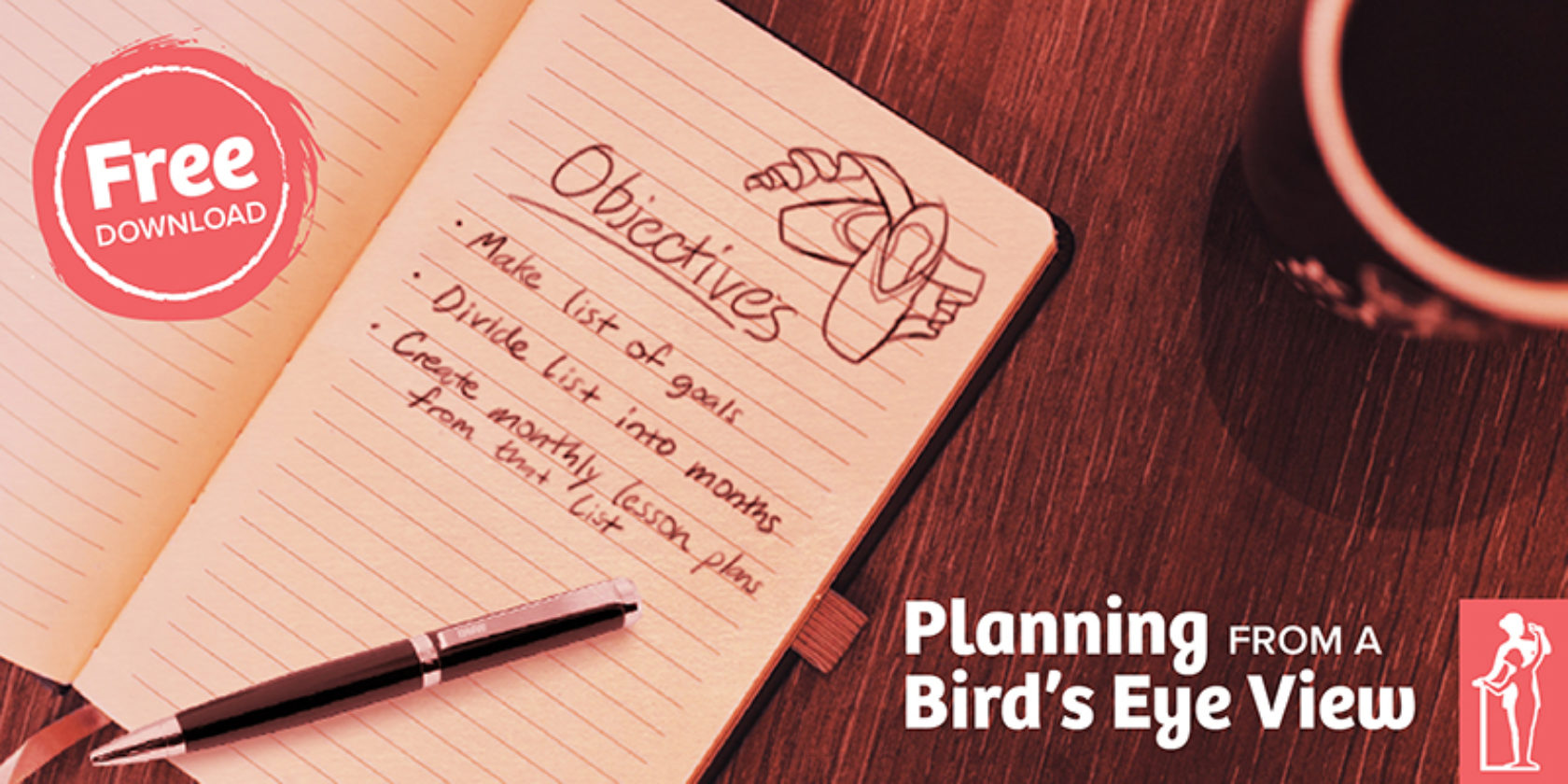As you approach the end of a year of teaching, do you ever get the feeling that there was so much more you could have taught your students that you just didn’t get around to? They were ready for it, they worked up to it, but you just ran out of time? I’ve been there before, and it was such a shame for the students because it was mostly due to my own lack of planning.
Taking a step back from your class and deciding on your overall goals for the year is such an important and helpful process. In this post, we’ll equip you with planning tips and a downloadable planning tool to help you get a bird’s-eye view of what you want to accomplish so you can structure your classes to cover as much material as possible.
Ruth Brinkerhoff gives some great practical advice on how to plan intermediate pointe classes in her book “Pointe 2: More About Pointe in the Second or Third Year.” And even though I’m writing this post with pointe work in mind, much of this advice can be applied as you plan your other classes as well.
(More specific exercises for the beginning pointe student can be found in The Ballet Source’s curriculum book “Pointe 1: An Introduction to Pointe Work.”)
Plan Your Classes
- Start with a list of steps and technical progress that you want your class to accomplish during the year.
- Now divide this list into months.* You can do this in rows on a spreadsheet, or just download our sample planning sheet (click link below to download).
- Next, divide each month’s teaching items into four lessons (weeks). This should be done separately in the form of weekly lesson plans. Be sure to differentiate items to be reviewed and any new material to be learned in each lesson.
Implement Your Teaching Plan
Most of us dance teachers end up with far more material on our list than the students can comfortably learn and retain in the time provided. That’s OK. Each month, just be sure to look at your list and choose the two most important items for the first week of lessons. (Hopefully at the Pointe 2 level they are coming to class two to four times a week.
When these items are learned, choose two more ideas to teach. Work at the speed your class can handle and remember, rather than at the speed you would like them to go. Keep reviewing new material for about three months. As you go through the year, make adjustments to your list to bring it in line with what the students are able to accomplish.
Consider using a memorized barre, changing some of the exercises about every two months. This gives the students a chance to concentrate more on the details of technique and artistry (see “Why ‘Changing It Up’ May Not Always Be Best”). It eliminates the choreographic teaching time between exercises, as simple reminders are all that is needed once the routine of the barre is learned. This can also give you, the teacher, a bit more time for teaching technical and artistic improvements.
Narrow Your Focus
Zero in on one main idea to improve in each lesson rather than trying to correct everything. This will result in more concentrated learning and longer retention. In this way, the improvement for that class is applied to each exercise and each center enchaînement. This teaches the students to apply technical and artistic principles to all the ballet movements, not just one or two.
It takes about twelve weeks for each new learning to become a somewhat permanent habit (see “The Twelve Week Rule”). It also takes that long for mistakes to become habits. That means you don’t have to correct every mistake in every class. Choose a few at a time to work on.
Finish on a Fun Note!
Each class should also include something just for fun; something the children like doing and are not corrected on. You might try asking one of the students to create an exercise or enchaînement for the class to try at the next lesson. Put this near the end of the class so they go home happy!
Download Planning Worksheet as .PDF
Download Planning Worksheet as .pages
Download Planning Worksheet as .docx
Related Articles:
- Why “Changing It Up” May Not Always Be Best
- Planning Your Lessons
- The Twelve Week Rule
- Planning Your Intermediate Pointe Class
*Depending on your yearly program of instruction, the last two months might be devoted to a warm-up at the barre, and then recital preparation. New work would need to be kept at a minimum and artistry and staging would be emphasized, along with the choreography for performance.


Comments
No comments for this post.
Add Comment